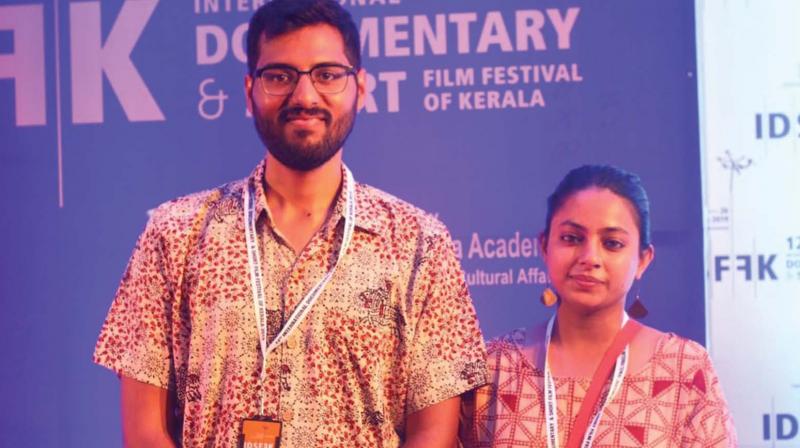Story of people’s textile
Avinash Maurya and Kriti Gupta’s documentary Rediscovering Jajam, which was screened at the recent IDSFFK.

The documentary Rediscovering Jajam begins with a jajam, a huge floor spread, being unrolled on a floor.
Watching it, don’t think that it is the story of ‘just’ a floor spread. Rather, it discovers how jajam, known as ‘people’s textile’, enriched culture and communal life of villagers in Rajasthan. It has been a part and parcel of their life for a long time.
Jaipur natives Avinash Maurya and Kriti Gupta, who directed the documentary, say it was the ‘layman angle’ that encouraged them to embark on this journey. “Jajam is deep-rooted in the village life of Rajasthan,” begins Avinash. “Back then, it was used during almost all occasions — be it festival or marriage. It signified coming together of people. They gathered, sang, danced and played games over jajams. Unlike other textiles that come with a royal background, jajam was made by and for common man,” he adds. The documentary elaborates. It shows how people had fun playing chaupad, a board game printed on jajams, and how jajam was made then using natural dye, bleach and hand block prints. “We were awed by its exclusive intricate prints, inspired from the place’s architecture, made with wooden blocks,” says Avinash, who along with Kriti travelled to the interiors of Rajasthan to trace jajam. “The documentary was shot in 15 days. But, it took us two years to build the network.”
For Avinash and Kriti, who are not filmmakers by profession, it was their passion for art and design that motivated them to research about jajam. They have done it as part of the Wabisabi project initiative in collaboration with Anokhi Museum of Hand Printing. “It is an ongoing project. Rediscovering Jajam is third in the series. They also have a travelling exhibition where age old jajams are displayed.”
Though, like all traditional crafts, production of jajams too dwindled with time, Avinash says its cultural and communal significance remains intact. “It symbolises power, sanctity and safety. Those days, during the panchayat, decisions were taken sitting on jajam. Also, it is believed that jajams would drive away evil spirits.
Now, though people don’t use it in its traditional sense much, it still remains as a powerful icon. For instance, during the last elections, a newspaper titled their article as ‘BJP takes away Congress’ jajam’. The word denotes collective power.”
The documentary was screened at the recently held International Documentary and Short Film Festival of Kerala (IDSFFK) in Thiruvananthapuram.

